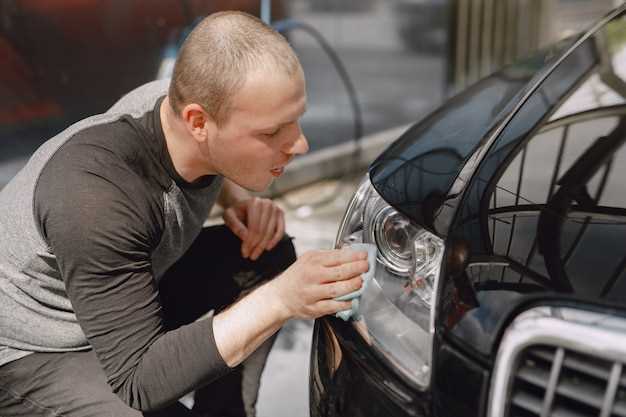
Purchasing a salvage performance car can be an intriguing option for automotive enthusiasts looking for a high-performance vehicle at a fraction of the original price. These cars, often deemed “totaled” by insurance companies due to damage, theft, or other factors, can often be restored to working condition. However, the process is not without its challenges and caveats, making it essential for buyers to thoroughly understand both the advantages and disadvantages before proceeding.
One of the most compelling benefits of buying a salvage performance car is the significant cost savings involved. These vehicles typically carry much lower price tags compared to their non-salvage counterparts, allowing buyers to invest in high-performance features they might not have considered otherwise. Additionally, some buyers appreciate the opportunity to personalize and upgrade their salvage vehicles, turning them into unique masterpieces that reflect their individual tastes.
On the flip side, there are notable risks associated with purchasing a salvage vehicle. Restoring a performance car can require substantial time, effort, and financial investment. Buyers must be cautious and perform due diligence to ensure that any hidden issues are identified and addressed. Furthermore, the resale value of a salvage vehicle can be significantly lower, posing potential challenges when it’s time to sell. Understanding these pros and cons is vital for making an informed purchase decision in the world of salvage performance cars.
Buying a Salvage Performance Car: Pros and Cons
When considering the purchase of a salvage performance car, it is crucial to weigh both the advantages and disadvantages. One of the main pros is the potential for significant cost savings. Salvage cars are generally priced lower than their non-salvage counterparts, allowing buyers to access high-performance vehicles at a fraction of the original cost.
Another advantage is the opportunity for customization. Many buyers of salvage performance cars choose to modify or upgrade their vehicles, using the lower purchase price as a means to invest in enhancements that can improve performance and aesthetics.
However, there are notable cons to consider. First, salvage cars often come with underlying issues that may have been overlooked during the assessment process. Even if a vehicle appears to be in good condition, structural damage or hidden mechanical problems can lead to costly repairs down the line.
Additionally, obtaining financing and insurance for a salvage performance car can be more challenging. Lenders may be hesitant to provide loans on vehicles with a salvage title, and insurance premiums can be higher due to the perceived risk associated with such cars.
Lastly, resale value can be a significant concern. Salvage vehicles typically depreciate faster than their non-salvage counterparts, which can result in a financial loss if you decide to sell the car later.
In conclusion, while buying a salvage performance car can offer exciting opportunities and savings, it is essential to conduct thorough research and inspections before making a decision. Balancing the potential benefits against the risks can help ensure a satisfying purchase experience.
Evaluating the Cost vs. Value of Salvage Performance Cars

When considering the purchase of a salvage performance car, it is crucial to assess the balance between the repair costs and the overall value of the vehicle. Salvage titles typically indicate that a car has been involved in an accident or has suffered significant damage, which means that repairs are often necessary before the car can be safely driven.
First, potential buyers should conduct a thorough inspection to understand the extent of the repairs required. This includes evaluating the structural integrity, engine condition, and any electronic systems that may have been impacted. Hiring a qualified mechanic can provide an accurate estimate of the repair costs. Understanding these costs upfront is essential, as they can significantly affect the final investment in the vehicle.
Next, it is important to compare the total cost of repairs to the market value of similar performance cars. Salvage performance cars can sometimes offer an attractive purchase price; however, if the repair costs exceed the potential market value, the investment may not be sound. Conducting a market analysis can help buyers gauge what similar models sell for in good condition, allowing for an informed decision.
Additionally, consider the long-term value of the car. Some performance models appreciate over time, while others may depreciate quickly. Investing in a vehicle that enhances its value post-repair can turn a salvage purchase into a profitable venture. Conversely, if a car is unlikely to regain its value even after repairs, it may not be worth the investment.
Finally, factoring in insurance costs is essential. Salvage cars might face higher premiums or may not be insurable at all with certain companies. Understanding these costs will provide a clearer picture of the total expenditure associated with owning a salvage performance car.
In summary, evaluating the cost versus value when purchasing a salvage performance car involves a comprehensive analysis of repair needs, market trends, future value potential, and insurance implications. Careful consideration of these elements can lead to a well-informed decision that aligns with both performance aspirations and financial realities.
Understanding Repair Challenges and Maintenance Needs

Purchasing a salvage performance car can be an exciting venture, but it also comes with unique challenges regarding repairs and maintenance. These vehicles often require a different level of knowledge and resources compared to standard models.
Here are some critical areas to consider when it comes to the repair challenges and maintenance needs of salvage performance cars:
- Assessment of Damage: Before buying a salvage performance car, a thorough inspection is essential. Understanding the extent of damage–especially structural, mechanical, and electrical–is crucial. In many cases, damages may not be visible and might require specialized equipment to assess.
- Availability of Parts: Sourcing replacement parts for salvage performance cars can be challenging. Depending on the make and model, original or aftermarket parts may be scarce, particularly if the vehicle has high-performance specifications. Researching availability beforehand is advisable.
- Skilled Labor: Repairs on performance cars often require advanced mechanical expertise. Finding a qualified mechanic or shop familiar with racing or high-performance vehicles can be difficult. It’s essential to ensure that those performing the repairs understand the unique requirements of salvage models.
- Cost Estimation: The cost of repairing a salvage performance car can escalate quickly. Factors such as labor, parts, and additional modifications should be considered when budgeting. Unexpected issues can arise post-purchase, leading to unforeseen expenses.
- Maintenance Schedule: Performance cars usually have specific maintenance schedules and needs. Maintaining optimal performance may require more frequent fluid changes and part replacements than a typical vehicle. Owners should familiarize themselves with the recommended maintenance for their specific model.
- Insurance and Legal Issues: Insuring a salvage performance car can present challenges. Many standard insurance providers may not offer comprehensive coverage for such vehicles. It’s essential to research options and understand the legal ramifications of owning a salvage title car.
In summary, while salvage performance cars can offer an exhilarating driving experience and potential cost savings, the associated repair challenges and ongoing maintenance needs require careful consideration and planning. Being informed about these aspects can lead to a more satisfying ownership experience.
Assessing Insurance Implications and Resale Potential
When considering the purchase of a salvage performance car, it is crucial to evaluate the insurance implications that come with such a vehicle. Typically, salvage cars are not eligible for standard insurance policies, which could mean needing to pursue specialized coverage options. These often come with higher premiums due to the perceived risks involved. In addition, insurers may require a comprehensive repair history before offering a policy, emphasizing the importance of restoring the vehicle to a roadworthy condition.
Another factor to consider is the potential for a higher insurance deductible. This can significantly impact out-of-pocket costs in the case of an accident or theft. Prospective buyers should also inquire if the salvage title will influence their ability to obtain coverage, as many insurers may limit what they are willing to pay for repairs or replacements on salvaged vehicles.
Resale potential is another critical aspect that should not be overlooked. Salvage cars may experience substantial depreciation, leading to reduced value compared to similarly performing models with clean titles. The market for salvage vehicles can be niche and limited, which may pose challenges when it’s time to sell. Buyers should factor in how extensive repairs will affect the car’s appeal and resale price, as well as the reputation of the repair shop used for restoration.
Ultimately, assessing both insurance implications and resale potential is vital for anyone considering the purchase of a salvage performance car. Careful consideration and thorough research can help ensure a more informed decision that balances enjoyment of the vehicle with long-term financial viability.






